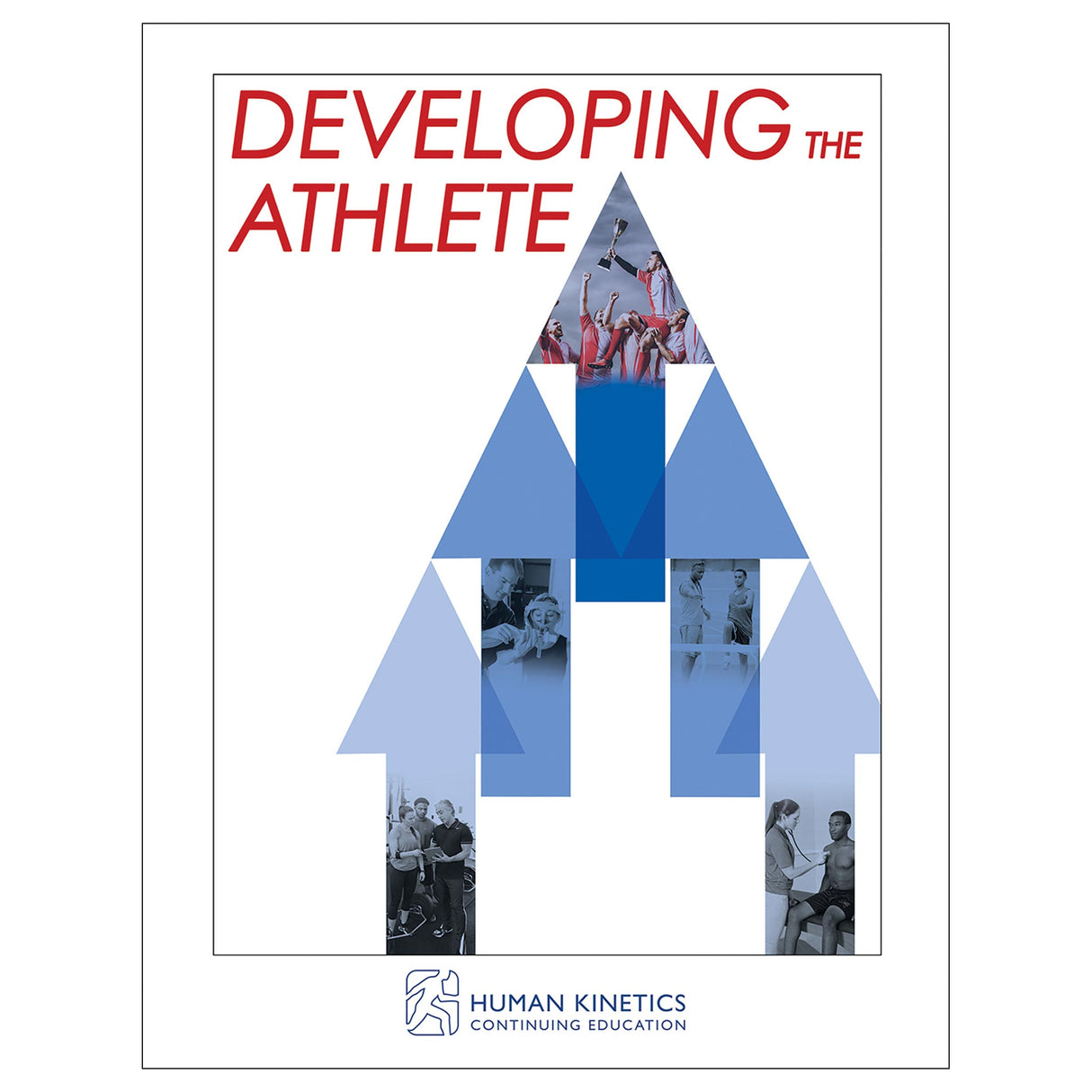Developing the Athlete Online CE Exam With Ebook
Author: Human Kinetics
$138.95 CAD
Human Kinetics strongly recommends that you complete your exam within the calendar year of your date of purchase to ensure approved credits do not expire for your organization.
- Developing the Athlete ebook
- Online continuing education exam
Get a better understanding of how the use of sport science can improve the skills needed for long-term athlete development. Developing the Athlete will help all types of sport performance professionals prioritize and apply the three Cs—credentials, competence, and commitment—so you can tap into known scientific principles and practices to develop a path for success for all your athletes.
After reading the ebook, certified professionals can take the companion CE exam to earn continuing education credits.
Learning Objectives
- Explain the value of sport specialization and when it should occur.
- Demonstrate an understanding of the mutable and nonmutable characteristics that should be considered when finding the most appropriate sport for a youth and placing them in the right position within the sport.
- Explain the tenets and applications of the long-term athletic development (LTAD) model.
- Discuss the role of the athlete composite within the context of talent identification, anthropometrics, and sport selection.
- Explain the interactions between the members of the player development team: coaching staff, athletic trainers, physical therapists, physicians, strength and conditioning staff, sport science professionals, sport nutritionists, sport psychologists, sociologists, and academic advisers.
- Create a valid and reliable health-, skill-, or sport-related fitness testing battery, and explain the procedures to prepare for testing.
- Understand the underlying physiological and adaptive mechanisms that contribute to long-term player development.
- Examine the framework for using the three Cs of successful player development—credentials, competence, and commitment—to optimize the athlete composite.
- List the specific guidelines for developing maximal strength, power, hypertrophy, muscular endurance, plyometric, speed and acceleration, deceleration, change-of-direction ability, agility and mobility, flexibility, and aerobic endurance.
- Discuss the different periodization models and determine the most appropriate model to maximize an athlete’s performance.
Audience
Certified strength and conditioning professionals, sport scientists, and other practitioners who design and implement development programs for athletes.Factors Influencing Player Development and Performance
Alignment in the Player Development Program
Factors Affecting Sport Performance
The Developmental Pathways
Development of the Athlete From Youth to Adulthood
Chapter 2. Player Profiles, Sport Matching, and the Player Development Team
Program Alignment
The Player Development Team Model
Units in the Player Development Team
Level of Competition
Determining Sport Demands
Impact of Athlete to Sport to Position Matching
Chapter 3. Testing and Assessments in Player Development
Setting the Standards for Testing and Assessments
Preparing for the Testing Sessions
Testing Protocols
Testing Organization
Choice of Tests for the Player Composite
Development of the Player Composite
Testing Athletes
Chapter 4. Understanding the Workout Stimuli: Impact on the Athlete Composite
Size Principle—Understanding Is Crucial to Practice
The Exercise Stimuli Create an Exercise Drug
Safety for the Athlete Is Priority One
The Stimulus-Response-Adaptation Cycle
Program Variables in Training Program Design
Variation in Training Programs Mediating Recovery and Performance
Flexible Nonlinear Periodization
Defaults in Nonlinear Periodization Models
Time Lines for the Adaptive Progress
The Acute Exercise Response
Chronic Training Adaptations
Chapter 5. Monitoring and Accounting in Player Development
The Importance of Proper Monitoring
Skill Sets Needed
Responsibilities of the Athlete
Decisions on What Data Need to Be Entered
Data Input and Quality Entry
Reports to Coaches and Athletes
Chapter 6. Interpreting and Evaluating Testing Results of the Athlete Composite
Roles of Player Development Team
Sources of Knowledge
Understanding Context of Training Step and Target Goals
Organizing the Database
Looking to Analyze the Data
Interpreting the Results
Chapter 7. Training and Recovery Approaches in Player Development
Importance of Individualization
Training Program Variation
Understanding the Exercise Stimuli Variables in Workout Design
Rest and Recovery
Sleep
Effective Interventions for Enhancing Recovery
Popular Recovery Technologies
Training Approaches for Different Elements in Player Development
Methods of Program Variation
Chapter 8. Looking Back and Ahead at the Road for Player Development
The Conceptual Model of Player Development
Historical Models Can Provide Object Lessons for Implementation
Academic and Research Influences
Influence of the Strength and Conditioning Coach
Player Development Models in the United States
Sport Analytics and Technology: The Good, the Bad, and the Ugly
Historically Proven Programs to Fit Any Paradigm
Future Challenges for Strength and Conditioning and Sport Performance Professionals
Flexible Nonlinear Programming—Another Historical Look
The Post-Competitive Career





